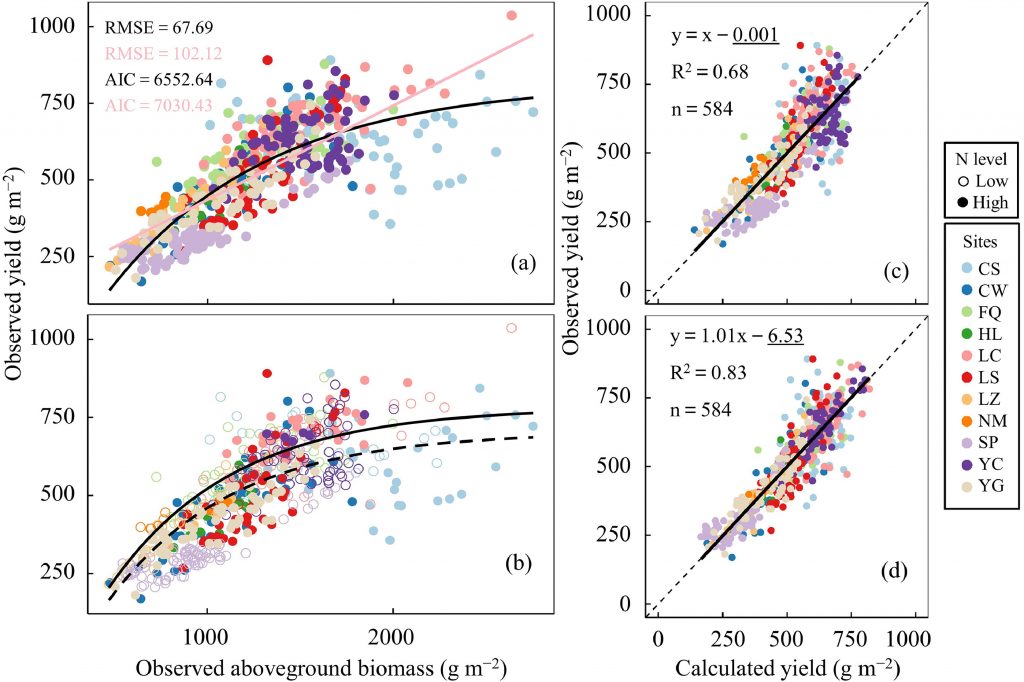Tsinghua Tiger Shengchao Qiao’s first paper is now out in Agricultural and Forest Meteorology (https://doi.org/10.1016/j.agrformet.2020.107932). In this paper, Shengchao has extended the P model to create a new model – following our trend towards simplified model names, imaginatively called the PC model – to simulate wheat production in China. The prediction of future crop yields in the face of anthropogenic climate change is central to being able to ensure social stability and economic development. China is particularly important in this respect because it supplies 17% of the world’s wheat production. Shengchao has used field data from China to develop relationships between gross primary production and above ground biomass, and between above ground biomass and seed yield, and showed that he can successfully predict interannual variability in wheat yield across a range of climates. Shengchao has made a further advance in terms of predicting phenology within the P model framework — an important piece of the puzzle for predicting future and past responses to climate change, doing away with the need to impose fAPAR in these simulations. Shengchao’s is now focusing on global conquest by testing how well the PC model predicts wheat yields in other parts of the world. So, the next question is: who is going to apply this model in the Neolithic?

Evaluation of simulated wheat yield at multiple sites with different levels of fertilisation from China.
